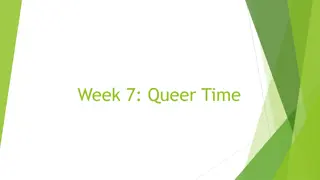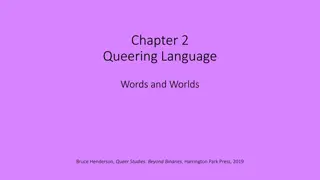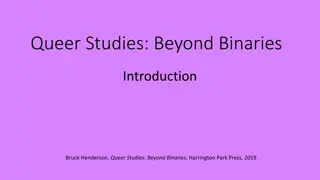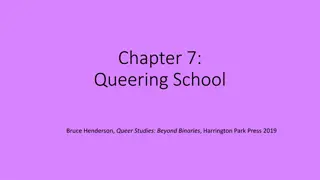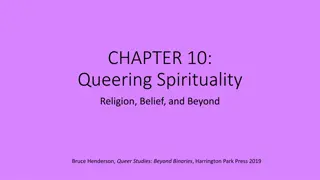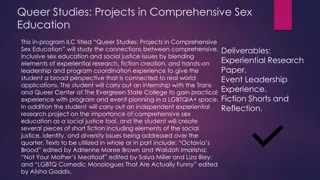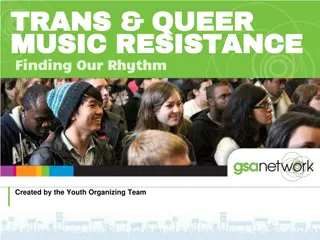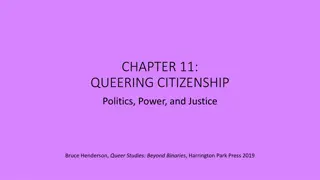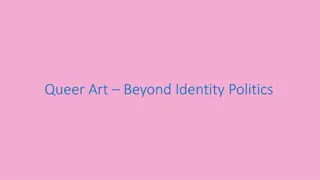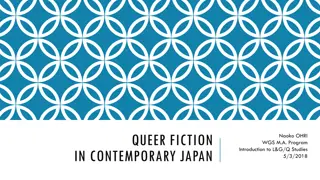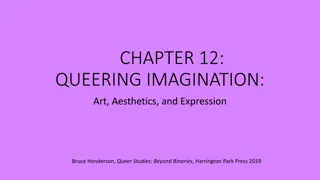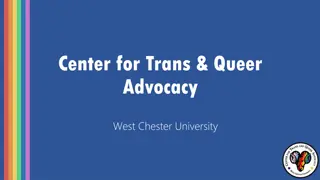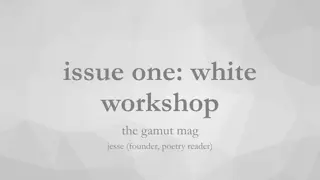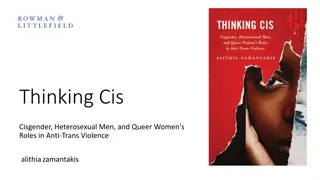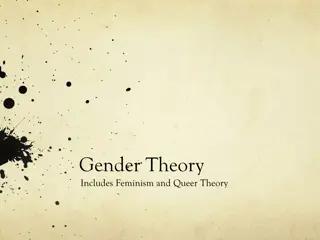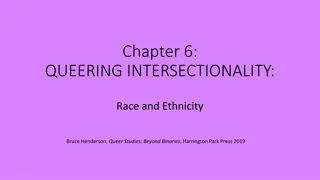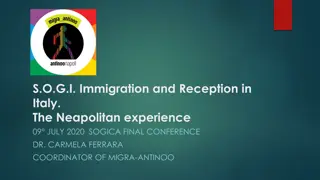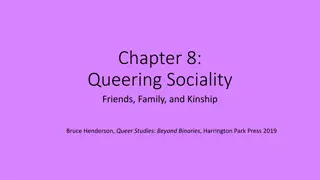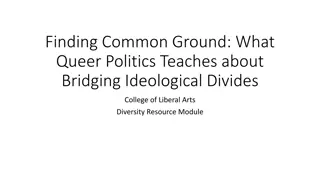
Understanding Queer Theory, Lesbian Feminism, and Gender Identity Exploration
Explore the evolution of queer theory, contrasting it with lesbian feminism, and delving into Judith Butler's perspective on gender identity in this insightful overview of LGBTQ+ theories and concepts.
Download Presentation

Please find below an Image/Link to download the presentation.
The content on the website is provided AS IS for your information and personal use only. It may not be sold, licensed, or shared on other websites without obtaining consent from the author. If you encounter any issues during the download, it is possible that the publisher has removed the file from their server.
You are allowed to download the files provided on this website for personal or commercial use, subject to the condition that they are used lawfully. All files are the property of their respective owners.
The content on the website is provided AS IS for your information and personal use only. It may not be sold, licensed, or shared on other websites without obtaining consent from the author.
E N D
Presentation Transcript
LGBT Lesbians, gay, bisexual, transgenders Queer - Non-hetrosexual (asexual, intersex, pansexual polyamorous people , crossdressing) Earlier third gender Q-Umbrella term
Homophobic (fear or hatred of homosexuality) Trans phobic Social exclusion Family rejection Religious threat Terminology Sexual abuse Unemployment Harrasment/bullying
There are two accusation against feminism 1. left out black women 2. left out lesbians-given imp for heterosexualism Lesbianism should be regarded as the most complete form of feminism
In 1990s a less essentialist notion of lesbianism had emerged- QUEER THEORY BREAKS FROM LESBIAN FEMINISM-MAKES NEW ALLEGIANCES WITH GAY MEN RATHER THAN WITH OTHER WOMEN. Queer theory rather than being women centered sees an identity of political and social interests with non hetrosexuals.
Difference between Queer theory and Lesbian Feminism? Queer theory got its influence from post structuralism. Deconstructing binary opposition Paired opposite is not absolute Since each term in the paring understood by the other. Reverse the hierarchy 1. 2. 3.
Hetrosexual/homosexual is deconstructed The opposition is unstable
. Judith Butler S GENDER TROUBLE
In her most influential book Gender Trouble (1990), Butler argued that feminism had made a mistake by trying to assert that 'women' were a group with common characteristics and interests. Rather than opening up possibilities for a person to form and choose their own individual identity
Butler notes that feminists rejected the idea that biology is destiny. But they accept- masculine and feminine genders would inevitably be built, by culture, upon 'male' and 'female' bodies, making the same destiny just as inescapable. That argument allows no room for choice, difference or resistance. In other words, rather than being a fixed attribute in a person, gender should be seen as a fluid variable which shifts and changes in different contexts and at different times.
In other words, gender is a performance; it's what you do at particular times, rather than a universal who you are. Butler argues that we all put on a gender performance, whether traditional or not, anyway, and so it is not a question of whether to do a gender performance, but what form that performance will take. By choosing to be different about it, we might work to change gender norms and the binary understanding of masculinity and femininity. This idea of identity as free-floating, as not connected to an 'essence', but instead a performance, is one of the key ideas in QUEER THEORY
All bodies are gendered from the beginning of their social existence (and there is no existence that is not social), which means that there is no natural body that pre-exists its cultural inscription. This seems to point towards the conclusion that gender is not something one is, it is something one does, an act, or more precisely, a sequence of acts, a verb rather than a noun, a doing rather than a being
UNDERSTANDING AND ACCEPTANCE FELLOW HUMAN BEING RESPECT THE CHOICE SEEING THINGS AS IT IS RECOGNITION STOPPING VERBAL ABUSE COMING OUT FROM HOMOPHOBIA AND TRANSPHOBIA

